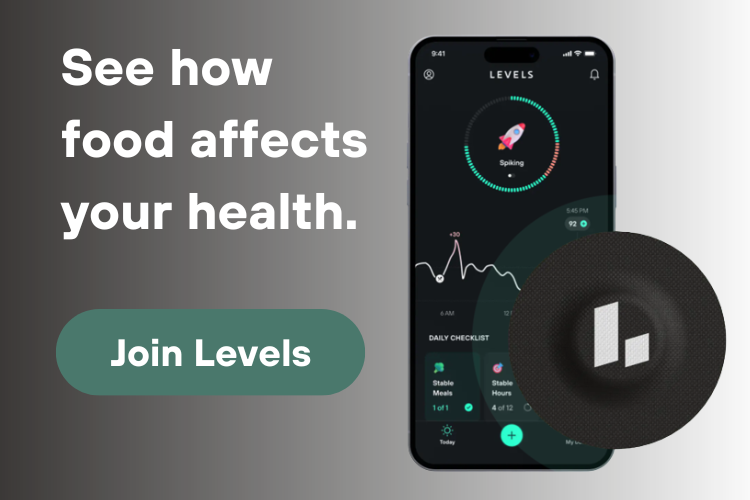Levels helps you see how food affects your health. Right now, Levels Membership is $199 a year and allows the purchase of continuous glucose monitors (CGM), at-home blood testing, and nutritionist guidance. The membership is still a premium offering, but it’s just the start.
The mission of Levels is to solve the metabolic health crisis. We’re in the Tesla Roadster phase of the business right now, building the high unit-cost model that we can learn from and optimize to get the cost down over time—which is, in part, why we’re shamelessly copying Tesla in writing this post. The people that are most at risk of metabolic dysfunction cannot afford a $199 program plus the cost of CGMs and other services, so we need to get the price down as quickly as possible.
Within the next five years, we’re going to be talking about the metabolic-health crisis in the same way that we currently talk about the opioid epidemic and cancer. This is the single biggest health crisis in the world and has yet to penetrate the zeitgeist.
Most people don’t yet realize the magnitude of the problem that metabolic dysfunction poses for society. If you want to dig deeper into this, you should check out our blog post, The Ultimate Guide to Metabolic Fitness, but the highlights are:
- More than 10% of the US currently has diabetes, and the rate is accelerating.
- There are almost 90 million Americans with prediabetes; 70% of those people will develop diabetes within 10 years, and 84% of people with prediabetes do not know they have it.
- Fewer than 25% of candidates of eligible age qualify for the military and this is largely due to being metabolically unfit; it’s a national security problem
- Metabolic dysfunction might be the single largest (preventable) force pushing up the cost of healthcare. Individuals meeting at least three criteria for metabolic syndrome have 60% higher annual healthcare costs; diabetes alone contributes to $327 billion in medical costs and lost productivity, expected to exceed $600 billion by 2030.
And that just covers the United States. In Mexico, diabetes is the number one cause of death (followed closely by heart disease and stroke, both metabolic-associated vascular diseases) and only 5% of patients with diabetes are estimated to have the disease under adequate control. India is estimated to have over 77 million people living with diabetes.
One reason we’ve been so in the dark about metabolic health is that there are no good tools to measure how your diet affects you in a quantifiable way. The biggest levers for metabolic health are, in no particular order:
- Sleep
- Diet
- Exercise
There’s no way to say which is the most important because they’re so interdependent. If you sleep poorly, your body releases stress hormones, generates inflammation, triggers hormones that lead to sugar cravings, and develops acute insulin resistance. Together, this may result in erratic mood and energy throughout the day, making it harder to exercise and prepare healthy meals, and generate a negatively reinforcing cycle of poor metabolic health.
We currently have good tools for measuring and quantifying sleep (including Eight Sleep, Oura) and exercise (like the Apple Watch, Fitbit, Whoop). This has allowed people to discover how their choices affect those aspects of their life, but there hasn’t been a way to quantify how your diet affects you. This forces people into making guesses about what is working and what’s not, leaving 59% of people saying conflicting food and nutrition information makes them doubt their choices.
In the same way that everyone knows to get eight hours of sleep, and how Fitbit convinced people that walking 10,000 steps is a good target for exercise, we will show people that maintaining a flat glucose curve is optimal for lifestyle and long-term metabolic health.
Empowering people to see for themselves how their choices affect their health gives them agency. We all know that eating a box of donuts is bad for us in a general, ill-defined sense, but without an immediate consequence like pain or death, it’s hard to feel compelled to overcome the powerful rewards of smell, texture, and taste.
By quantifying the consequence of a choice in real-time, we can effectively close the loop on diet, connecting a specific action to the nature and degree of the reaction, and allowing us to continuously improve our choices. The first time you see the data that closes the loop on how your choice of breakfast directly caused your mid-day energy crash—that’s when you make a change.
Behavior change doesn’t come from lecturing people or telling them to “make better choices.” We know this from research examining whether patients implement their doctors’ recommendations: The vast majority do not. The solution to this problem is bottom-up—most people will voluntarily make better choices if they have evidence that those choices are making a direct, immediate, and positive impact on their lives.
The “calories in, calories out” model of nutrition is simplistic to the point of being wrong. We owe a debt of gratitude to the people who have blazed the trail in our modern understanding of metabolic health, including Drs. Jason Fung, Rhonda Patrick, Peter Attia, Dom D’Agostino, Molly Maloof, Ben Bikman, Louise Burke, David Perlmutter, Mark Hyman, Eric Topol, David Sinclair, Sara Gottfried, David Jenkins, and many others.
We are defining the category of metabolic health, using real-time tracking with bio-wearables. The center of gravity of healthcare is shifting towards greater democratization of data, which is increasingly putting more power in the hands of the individual. Enable a person to make informed choices based on their own data to improve their own health, repeat many times across many people, and it adds up to a global-scale result. In short, the master plan is:
- Build premium software to quantify the effect of diet on metabolic health.
- Use that money to expand awareness and scientific understanding of metabolic health; build a more affordable product.
- Use that money to build an even more affordable product.
Don’t tell anyone.










